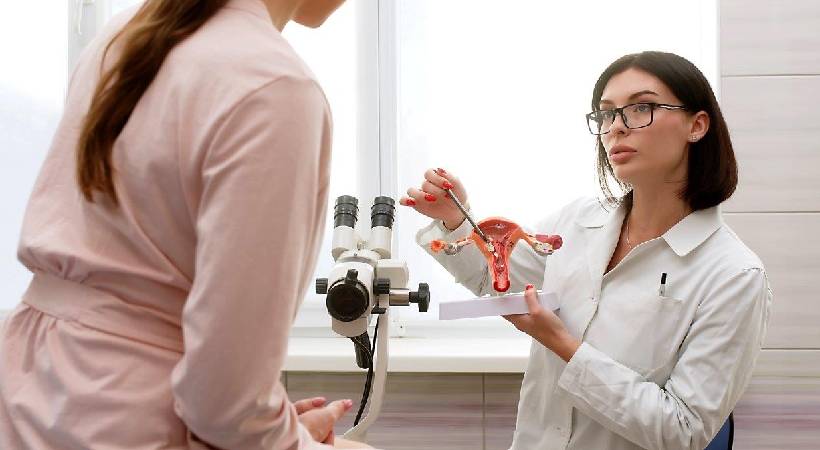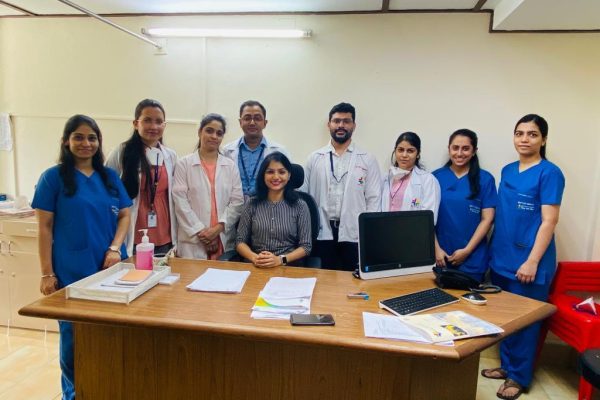Welcome to 0 to 9 Women’s Care & Fertility Center...
Our Services

Introduction
Laparoscopic oophorectomy is a minimally invasive surgical procedure to remove one or both ovaries. It is commonly performed to treat ovarian conditions or as a preventive measure for high-risk patients. The laparoscopic approach offers advantages such as smaller incisions, faster recovery, and reduced post-operative discomfort compared to traditional open surgery. Depending on the indication, it may be unilateral (one ovary removed) or bilateral (both ovaries removed).
Causes
Laparoscopic oophorectomy may be recommended for various medical conditions, including:
- Ovarian Cysts: Persistent or large cysts causing pain or complications.
- Ovarian Tumors: Benign or malignant growths.
- Endometriosis: Severe cases where ovarian tissue is extensively damaged.
- Torsion: Twisting of the ovary, cutting off its blood supply.
- Pelvic Inflammatory Disease (PID): Severe infections leading to ovarian damage.
- Prophylactic Removal: For women with high genetic risk of ovarian or breast cancer (e.g., BRCA gene mutations).
- Ectopic Pregnancy: If the ovary is involved.
- Hormonal Disorders: Rare cases where ovarian removal is necessary to manage conditions like estrogen-dependent cancers.
Symptoms Indicating Need for Surgery
Symptoms that may necessitate oophorectomy include:
- Chronic pelvic pain.
- Persistent bloating or abdominal discomfort.
- Unusual bleeding or menstrual irregularities.
- Pain during intercourse.
- Rapidly enlarging ovarian masses or significant cyst growth.
- Signs of hormonal imbalance.
Diagnosis
To determine the need for laparoscopic oophorectomy, the following diagnostic methods are used:
- Medical History & Physical Examination: Evaluating symptoms and risk factors.
- Imaging Studies:
- Ultrasound: To assess the size, location, and nature of ovarian masses or cysts.
- CT Scan/MRI: Detailed imaging to evaluate complex conditions or suspected malignancies.
- Blood Tests:
- Tumor Markers: CA-125 for ovarian cancer, hormone levels for functional ovarian issues.
- Complete blood count (CBC) and inflammatory markers.
- Biopsy (in some cases): To rule out cancer before surgery.
Treatment
Laparoscopic Oophorectomy Procedure:
- Preparation:
- Fasting before surgery and stopping certain medications as advised.
- General anesthesia is administered.
- Surgical Steps:
- Small incisions are made in the abdomen.
- A laparoscope (camera) is inserted for visualization.
- Specialized instruments are used to detach the ovary from surrounding tissues.
- The ovary is removed through one of the incisions, often within a protective bag to prevent spillage.
- Duration: The procedure typically takes 1–2 hours.
Post-Operative Care:
- Pain management with medications.
- Gradual return to normal activities (within 1–2 weeks).
- Avoid heavy lifting or strenuous exercise for 4–6 weeks.
- Monitor for complications such as fever, severe pain, or unusual discharge.
Risks:
- Bleeding, infection, or damage to surrounding organs (bladder, intestines).
- Hormonal imbalances (if both ovaries are removed).
- Increased risk of osteoporosis and cardiovascular disease with bilateral oophorectomy.
Conclusion
Laparoscopic oophorectomy is a safe and effective procedure for managing ovarian disorders, offering minimal recovery time and reduced complications. Whether performed for therapeutic or preventive reasons, it requires thorough evaluation and individualized planning. Women undergoing this procedure should discuss potential hormonal and reproductive consequences with their healthcare provider to make informed decisions about their care.
We’d love to hear from you !
Our Gallery








Unveiling New Horizons in Fertility, One Article at a Time
🌸 Tips for a Healthy Pregnancy –
Pregnancy is one of the most beautiful journeys in a...
When Your Clock is Off: Understanding and
A woman’s menstrual cycle is often described as a perfect...
4 Lifestyle Factors That Influence Fertility
When it comes to improving fertility and achieving a healthy...




